Clancy Tucker's Blog, page 120
April 10, 2019
11 April 2019 - 500 YEAR-OLD SKELETON FOUND OF ‘BOOTED MAN’
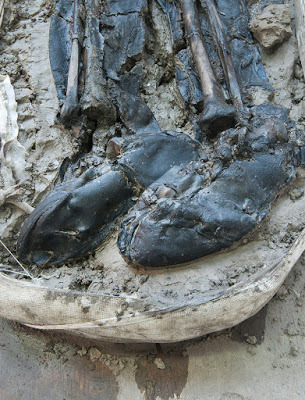
500 YEAR-OLD SKELETON FOUND OF ‘BOOTED MAN’
G'day folks,
You never know what you might find in London's mud. A skeleton of a man wearing leather boots has been found in the Thames mud and his footwear would have been well-suited to tromping through the London mud that preserved it.
bENEATH LONDON IS A LAYER cake—thousands of years of civilization, stacked atop one another—on the shores of the Thames. Whenever an excavator hits the soil, which happens a lot, there is always the possibility of a chance encounter with old bits of leather, pieces of shipwrecks, or the bones of a long-forgotten urban resident, preserved by the muddy shore.
A recent discovery has London archaeologists scratching their heads. It is the skeleton of a man, lying face down with an arm splayed dramatically over his head. His most distinguishing feature? His footwear. The skeletal remains are clad in a remarkably intact pair of thigh-high leather boots, resulting in his nickname: “Booted Man.”
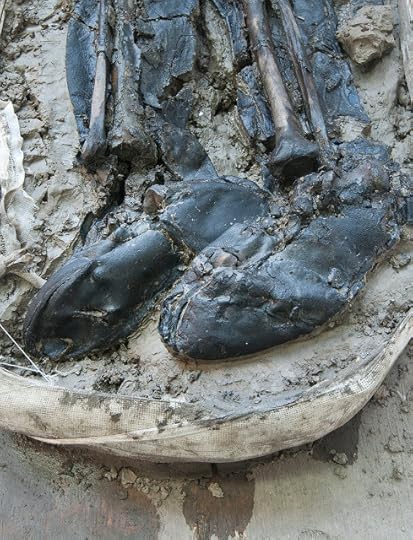
“We find a lot of skeletons, but you don’t often find a skeleton lying on his belly with his boots on,” says Lucie Altenburg, conservator at Museum of London Archaeology (MOLA) Headland. “It’s quite unusual to find that much leather on a person lying flat on the shore of the river. It’s a bit mysterious.”Luckily, there are some clues.Historians specializing in leather believe the man’s boots date to the late 15th century. Leather was an expensive and prized material at the time, and specialists at MOLA think the boots would have been ideal for the sticky mud along the shore of the river. This particular pair was reinforced with extra soles.
“By studying the boots we’ve been able to gain a fascinating glimpse into the daily life of a man who lived as many as 500 years ago,” said Beth Richardson, a finds specialist at MOLA, in a statement. “They have helped us to better understand how he may have made his living in hazardous and difficult conditions, but also how he may have died.”

Analysis into the bones reveals a harrowing life and death. His final position suggests the Booted Man died after falling in the mud, after which his remains were covered by sediment. An osteological examination shows that the fatal fall wasn’t his only misfortune. His bones indicate multiple healed breaks, as well as evidence of osteoarthritis, a painful degenerative joint disease. Researchers also discovered deep grooves along his teeth, suggesting that he spent much of his life using them to hold something, possibly a fishing rope.“I would love to know, what he was doing and how did he end up there? That’s the question we’ll never really have an answer to,” says Altenburg. “His boots are probably an indicator of his job, mudlarking or fishing. But there’s so much we don’t know.”Altenburg says the wet alluvial soil where the booted man was found provides the perfect conditions to preserve leather and human remains. “This kind of clay is really dense and it dries rock hard,” she says. “You’ve got a layer of organics degraded in it, so it smells fishy and you can really tell you’re by the river.”

The man was found 20 feet down, during excavations for the Thames Tideway Tunnel, a massive sewer project. The site of the discovery location was a bend in the river close to where the medieval Bermondsey Wall once stood.Altenburg says MOLA will continue to analyze the Booted Man, and hopefully dig up some further answers. A moss-like substance was found in his boots, which will go to their archaeological botanist for analysis. They suspect that it was used as insulation.While the Booted Man may have met an unfortunate end, the final and (most likely) worst day of his life is a gift to archaeologists and historians who want to understand London life was like hundreds of years ago.“London’s history never stops giving,” Altenburg says. “We’re literally living on layers from prehistoric times to Roman times, medieval, postmedieval, and then somewhere in between all of that you’ve got the man who’s just kind of dropped dead with his boots on.”

Clancy's comment: Wow, and little did he know that his remains would be seen on my blog in 2019. I'm ...


Published on April 10, 2019 14:57
April 9, 2019
10 April 2019 - AMAZING QUOTES WORTH READING

AMAZING QUOTES
WORTH READING
G'day folks,
Welcome to another set of inspiring quotes.











Clancy's comment: I love that quote about the cost of education. So true.
I'm ....


Published on April 09, 2019 14:29
April 8, 2019
9 April 2019 - RARE WAR PHOTOGRAPHS

RARE WAR PHOTOGRAPHS
G'day folks,
Welcome to some rare snaps of war.












Clancy's comment: Mm ... Any war is hell.
I'm ...


Published on April 08, 2019 14:09
April 7, 2019
8 April 2019 - Majlis al Jinn Cave Chamber In Oman
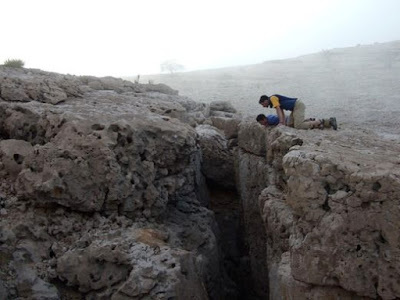
Majlis al Jinn Cave Chamber In OmanG'day folks,Here is another interesting place in Oman.This giant underground cave chamber can only be accessed through a small opening at the top.
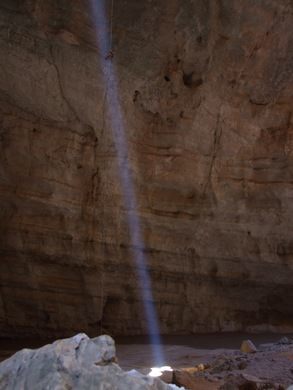
Majlis al Jinn is the second largest cave chamber in the world by surface area. The base of the cave is 624,000 square feet, the size of nearly 11 football fields. However the only way to get in is through one of three tiny openings at the top, all of which have been formed over time as the accumulation of rainwater dissolved the limestone covering.
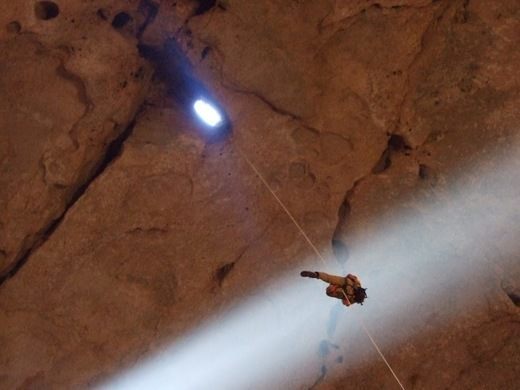
This cave chamber, located 60 miles from Muscat, was discovered by Americans Don Davidson Jr. and his wife Cheryl Jones in 1983. They noticed the strange holes in the ground on aerial photographs, and eventually made the journey out via helicopter. When they looked down into the small openings, they saw the sandy floor below - over 500 feet down. Just days later, they rappelled down for the first time.
In an attempt to find an appropriate name for the chamber, they asked the Omanis in the surrounding area if they had a local name for it, to which the response was no. They did, however, mention that they believed that the cave was filled with genies, which are prevalent in Omani mythology and the Quran. In Arabic, the word for “genie” is “al-Jinn”, so hence, the American explorers named the cave is “Majlis al Jinn. “Majlis” means “meeting place,” making the cave name, “the meeting place of the genies.”
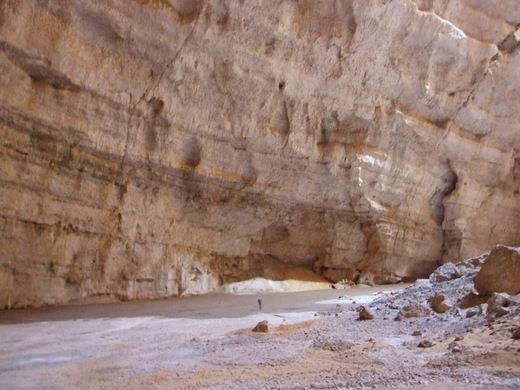
This cave room has become a hot spot for abseilers and BASE jumpers. A small hole at the top sheds a beam of light into the vast base. Strangely, the bottom of this chamber appears to be a sort of graveyard for goats (who presumably fell in), snakes, and birds - their bones littering the floor.
 Clancy's comment: Extraordinary. It certainly is an interesting part of the world. What will they find next?
Clancy's comment: Extraordinary. It certainly is an interesting part of the world. What will they find next?I'm ...


Published on April 07, 2019 14:19
April 6, 2019
7 April 2019 - BIMMAH SINKHOLE in OMAN
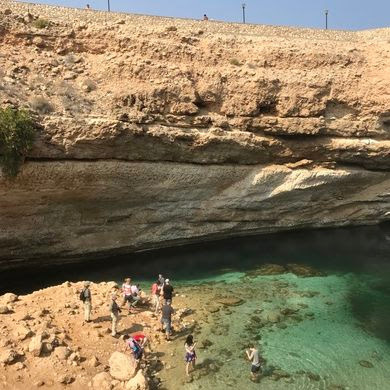
BIMMAH SINKHOLE in OMAN
G'day folks,Here is a sinkhole turned swimming hole, full of dazzling turquoise water. Long attributed to a meteorite, this beautiful swimming hole is actually a naturally occurring sinkhole.
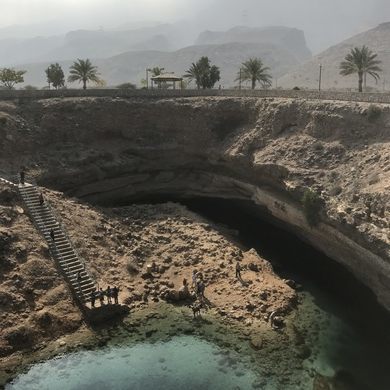
Sinkholes are often the result of groundwater eating away at rocks like limestone and carbonate. Caverns form as the rocks dissolve, and eventually the ground above caves in, sometimes taking cars, houses, and even the occasional pizza place with it.
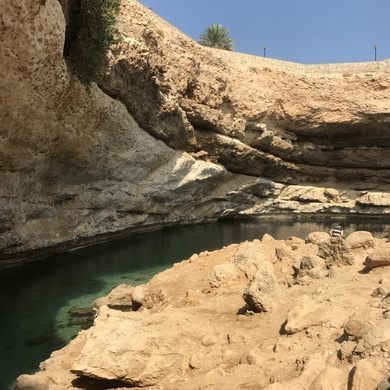
In Northern Oman, just off the road between Dibab and Bimmah, there’s a particularly beautiful example of the natural phenomena. In an otherwise flat area, a sinkhole formed about a third of a mile from the sea, resulting in a turquoise mix of fresh and salt water.
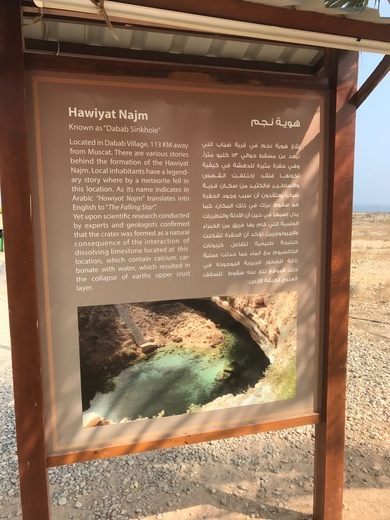
Geologists have confirmed the 65-foot deep pool is in fact a sinkhole, but locals hold on to the legend that a meteorite hit the spot. When the local municipality developed the area into a park to preserve and protect the hole, the name Haweat Najm (The Falling Star) Park was chosen.
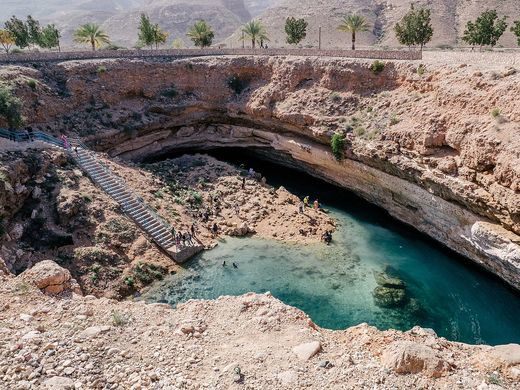
A large concrete staircase sticks out among the natural landscape, but offers a less precarious way down to the picturesque pool. Many folks just go to admire its beauty, or dip their feet in the vividly blue-green water for a fish-administered pedicure of sorts. Still some take full advantage of the salty water, diving from the cliffs within the cavern.
 Clancy's comment: Wow. Nice spot, eh?
Clancy's comment: Wow. Nice spot, eh?I'm ...


Published on April 06, 2019 15:17
April 5, 2019
6 April 2019 - The Wadi Dawkah Frankincense Trees
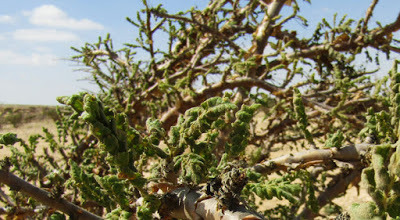
The Wadi Dawkah Frankincense Trees
G'day folks,
Here is a tree I've heard of but never seen. These gnarly desert trees produce the prized aromatic resin traded along the ancient incense trail.
Frankincense is one of those words with strong biblical associations and relatively little everyday use. That is, if you’re not in or from the Arabian Peninsula.
Frankincense is a resin of the Boswellia sacra tree, more commonly referred to as the frankincense tree. These gnarled trees may not be the most majestic plants on earth, but they are extremely sturdy, and they can be tapped for their aromatic resin. Frankincense resin is used for the production of incense, perfumes, and essential oils, and it was a highly prized product in antiquity.

This natural park of frankincense trees is located in Wadi Dawkah, an important stop along the ancient Frankincense Trail, an incense trade route that’s been used by merchants for millennia. Around 5,000 frankincense trees can be found in this desert valley, including some ancient specimen. Although frankincense trees can reach a height of 26 feet, most trees in Wadi Dawkah are no more than 10 feet high.

Around age 8 to 10, frankincense trees are mature enough to be tapped. In April, when the temperatures are rising fast, the trees can recover from the tapping process. Using a putty knife, workers scrape the bark of the tree; the exact location and number of incisions per tree are dictated by the knowledge that has been passed down from one generation to the next. Resin oozes from the wound, which is left on the tree for two or three weeks to harden.

The first harvest, however, is not usable. Workers will repeat the tapping process soon after the first harvest, and the second harvest yields the raw material for the production of incense and essential oils. The same goes for the third and final tapping of the season. A mature healthy tree can produce around 7 to 9 pounds (3 to 4 kg) of frankincense a year.
Unfortunately, frankincense trees have drastically decreased in number over the years due to over-exploitation. The natural park in Wadi Dawkah has the dual purpose of protecting the existing trees and growing new ones in order to increase the population of frankincense trees in the wadi.

Clancy's comment: Interesting, eh? I can only assume that this tree provides the incense used in modern church services.
I'm ...


Published on April 05, 2019 13:59
April 4, 2019
5 April 2019 - IT'S A WEIRD LIFE AS A COMMUTER

IT'S A WEIRD LIFE
AS A COMMUTER
G'day folks,
When you don’t have access to a car, you have to rely on public transportation. This means dealing with all of the other people traveling from home to work and back again. Of course, with so many work-exhausted people together in tight spaces, you’re bound to be in for a surprise sometimes.
While there is some unspoken commuting etiquette (not to mention all the signs and announcements that urge you to be considerate towards others), not everyone behaves on buses and trains. Sometimes that can lead to irritation — but other times, you can’t help but laugh!











Clancy's comment: Mm ... Amazing, eh? Welcome to the real world. Check out the guy below.
I'm ...


Published on April 04, 2019 14:29
April 3, 2019
4 April 2019 - THE GREY WOLF
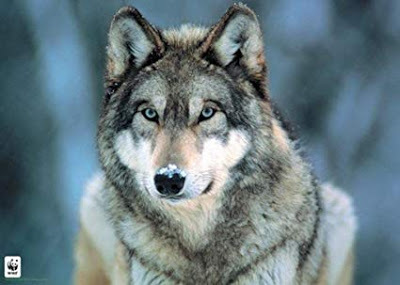
THE GREY WOLF
G'day folks,
This is one creature I'd rather not tangle with when it's hungry. Wolves develop close relationships and strong social bonds. They often demonstrate deep affection for their family and may even sacrifice themselves to protect the family unit. The wolf, also known as the grey/gray wolf or timber wolf, is a canine native to the wilderness and remote areas of Eurasia and North America. It is the largest extant member of its family, with males averaging 43–45 kg and females 36–38.5 kg.
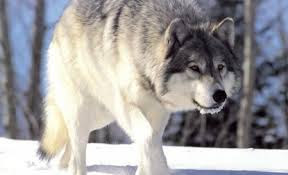

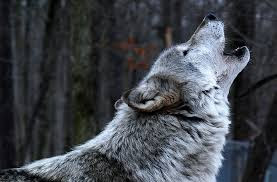
Quick FactsType: MammalDiet: CarnivoreLife span: 6 to 8 yearsSize: Head and body 91 to 160 cm, Tail 33 to 51 cmWeight: 18 to 79 kgHabitat: plains, forests, tundraRange: northern United States, Canada, and Alaska, with some scattered populations left in Europe and some reintroduced populations in the American southwest and, notably, in Yellowstone National Park.Scientific name: Canis lupus Wolves are the largest members of the dog family.The Grey Wolf is known as the Timber Wolf in North America and the White Wolf in the Arctic, or more generally as the Common Wolf.Wolves are legendary because of their spine-tingling howl, which they use to communicate. A lone wolf howls to attract the attention of his pack, while communal howls may send territorial messages from one pack to another. Some howls are confrontational. Calls may be answered by rival packs. Much like barking domestic dogs, wolves may simply begin howling because a nearby wolf has already begun.There are many subspecies of wolf including the Arctic wolf, all of which use a variety of howls to communicate to one another.They have a highly organised social structure enabling them to enjoy maximum cooperation when hunting, communicating and defending territory. Wolves live and hunt in packs. They are known to roam large distances – as much as 20km in a single day. Wolf packs in the far North often travel hundreds of kilometres each year as they follow migrating herds.Wolves are highly territorial animals, and generally establish territories far larger than they require to survive; in order to assure a steady supply of prey. Territory size depends largely on the amount of prey available: in areas with an abundance of prey, the territories of resident wolf packs are smaller.These social animals cooperate on their preferred prey. A single wolf is capable of catching and killing a deer unaided, but when hunting as a pack they prey on much larger animals, including deer, elk, and moose. Wolves also eat smaller mammals such as birds, fish, lizards, snakes, but also eat fruit.When they get a successful kill, wolves do not eat in moderation. A single wolf can consume 9 kg of meat in one sitting! The highest ranking wolf will eat first and what cannot be consumed is left for the scavengers, even though they may have to wait another three days for their next meal.Wolves are not particularly fast, with a top speed of about 45km/h (28mph). They instead rely on their hearing and sense of smell to detect prey. They have remarkable powers of endurance and are known to follow their target all day and night if necessary.Once a wolf has found a mate, they usually stay together for life.Wolf packs are established according to a strict hierarchy, with a dominant alpha male at the top and an alpha female not far behind. Usually this male and female are the only animals of the pack to breed. Packs consist of between five and ten animals – usually offspring from several years. All of a pack’s adults help to care for young pups by bringing them food and watching them while others hunt.The hierarchy that exists within each pack is maintained by dominant or submissive body posturing, and by other behaviour patterns such as the communal care of the young.Wolves feed their young by carrying chewed-up food in their stomachs and throwing up, or “regurgitating”, the food for the pups when they come back to the den.Wolves have only one breeding season per year – in the winter. They have their puppies in late April or early May. They have their puppies in an underground hole, or den. There are usually four to six puppies in a litter. The puppies grow up fast and are their adult size by the end of their first winter. They are grown up by the time they are two years old.
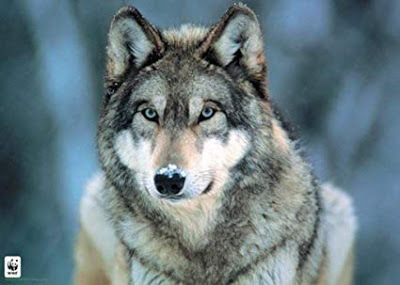
Wolves develop close relationships and strong social bonds. They often demonstrate deep affection for their family and may even sacrifice themselves to protect the family unit.A wolf which has been driven from the pack or has left of its own accord is called a lone wolf. It avoids contact with packs and rarely howls.The grey wolf has been the notorious villain of fables and fairy stories for centuries, yet this highly intelligent and sociable animal has done little to warrant its terrifying reputation.Once widespread throughout North America, Europe and the Far East, the grey wolf is, sadly, now only found in large numbers in specific parts of the USSR, North America and Eastern Europe.The grey wolf has always been feared by man and has probably been persecuted more than any other animal. Did you know that centuries ago, wolves were ‘tried’ by people and burnt at the stake? However its intelligence and flexibility have saved it from extinction.Another reason for their decline has been the dramatic reduction of their natural prey. This has largely been replaced by farm stock which is protected by the use of poison, traps and guns. The final fate of wolves will depend on whether man is prepared to coexist with them.
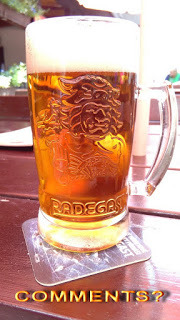
Clancy's comment: Interesting facts, eh?I'm ...


Published on April 03, 2019 14:20
April 2, 2019
3 April 2019 - AWESOME PHOTOGRAPHS

AWESOME PHOTOGRAPHS
G'day folks,
Yesterday, I was given a swag of books on photography. Some of the photographs contained in those books are breathtaking. As are these shots taken by talented photographers.







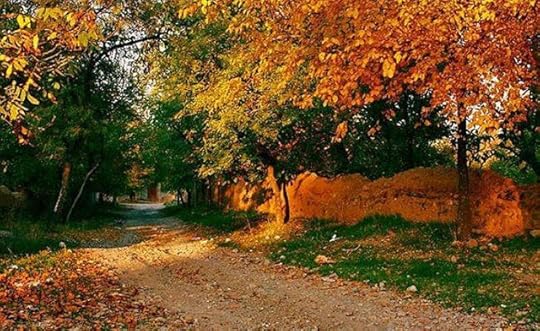









Clancy's comment: Yes, some of the best shots I've ever seen are the ones that most people never see. The photographer does.
I'm ...

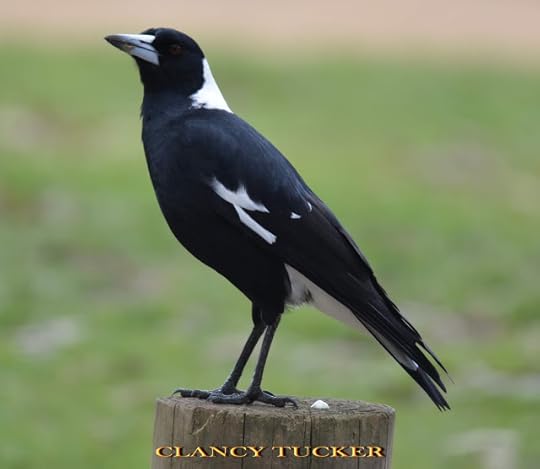
Published on April 02, 2019 14:30
April 1, 2019
2 April 2019 - RARE 1,000 YEAR-OLD COPPERHEAD ARROW FOUND
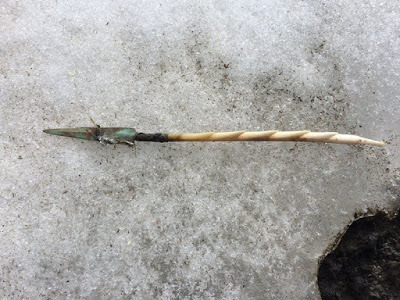
RARE 1,000 YEAR-OLD COPPERHEAD ARROW FOUND
G'day folks,
A rare example of copper metallurgy has been found in Yukon.
IN JUNE 2016, GREG HARE, an archaeologist working for the territory of Yukon, in northwestern Canada, was standing on a patch of ice near Carcross, where Bennett Lake and Nares Lake meet, when he noticed something sticking out of the ground. Carcross was a famous stopover during the Klondike Gold Rush, and also a fertile caribou-hunting ground for First Nations peoples, so it is not uncommon to find wood, antler, or bone hunting implements sticking out of the ice. Such tools are easy to lose track of once they have been launched.

“We knew it was an arrow right away as we have recovered enough similar tools before,” Hare says, “but the curious part was that when we tried to extract it from ice it kept sticking.” That’s because attached to the barbed antler arrowhead was a large, heavy tip made of copper, a very unusual find in Yukon. “The few copper arrowheads that were found before had never been attached to anything,” he explains. “This is the first intact copper arrow we encountered.”

Around 1,100 years ago, local indigenous people made the transition from hunting with darts, launched with a spear-thrower known as an atlatl, to bow-and-arrow technology. Radiocarbon dating places the new arrowhead at nearly 1,000 years old, just after the transition, and well before any contact with Europeans. “The arrowhead is made of 99.5 percent pure copper,” Hare continues, “which shows it comes from local copper nuggets as opposed to European smelted copper [alloys].” Such a find is exceptionally rare and is providing insight into the evolution of hunting technology in this part of the Arctic.

Clancy's comment: I love reading about these finds. They prove how little we have come, or how advanced our forebears were.I'm ...


Published on April 01, 2019 15:48



